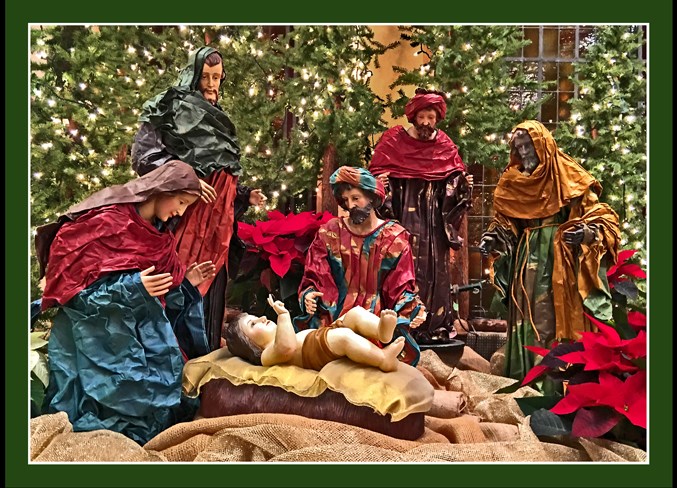This week’s guest column is a Christmas gift to his columnist father by our son Reginald Harbeck, an Information Technology consultant and writer. Thanks, Reg! – Dad ____ WOULD IT SURPRISE you to know that St. Francis of Assisi invented the nativity display we call a crèche? How about that “Francesco” (meaning “the Frenchman”) was his nickname, and his name at birth was actually Giovanni di Pietro di Bernardone? It turns out that, even though he was born in the late 12th century in what is now Italy, his father, Pietro, had a great love for all things French – including Francesco’s mother, Pica, who was from Provence. Hence the French name, crèche. What’s in a name? Well, the word crèche in French translates as both “nursery” and “manger” in English. For Christmas, 1223, St. Francis arranged a manger and some real livestock to create a sensory impression of what the original stable and manger would have looked – and smelled – like at Jesus’ birth. Interestingly, that manger, which was covered in straw, served as the altar for that Christmas Mass, so the bread and wine of communion would have been consecrated on it. That seems particularly fitting since the French verb manger means “to eat”! While St. Francis’s crèche and its immediate descendants made use of live actors, it wasn’t long before statues and figurines began to replace live actors. By the time of the Protestant Reformation in the 16th century, this seasonal use of such representations in the nativity scene had become so ingrained that it was perpetuated across many different denominations, and has continued to be a special part of many Christian traditions ever since. Consequently, a favourite Facebook meme of mine mentions that Christmas is a special time of the year when Protestants are comfortable with statues of Jesus, Joseph and Mary. Of course, as Christians are fond of reminding each other, Jesus is the reason for the season. And, as some of us will also point out, it was Mary’s “yes” that made all of this possible – and her husband Joseph’s acceptance of his consequent role that brought it all together in this stable arrangement. So, as we prepare to hail the New Year, we see the nurturing family context in which the Holy Infant was to spend his formative years before fulfilling the promise of Christmas, giving each of us role models as we say our own “yes” to the opportunities to accept goodness and grace into our own lives, during this holy season and throughout the year. A way, in a manger, to make room for peace and goodwill on earth, to the glory of God in the highest! Thank you, St. Francis, for inspiring this crèche course in the meaning of Christmas.
© 2018 Reginald W. Harbeck




